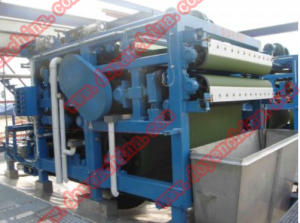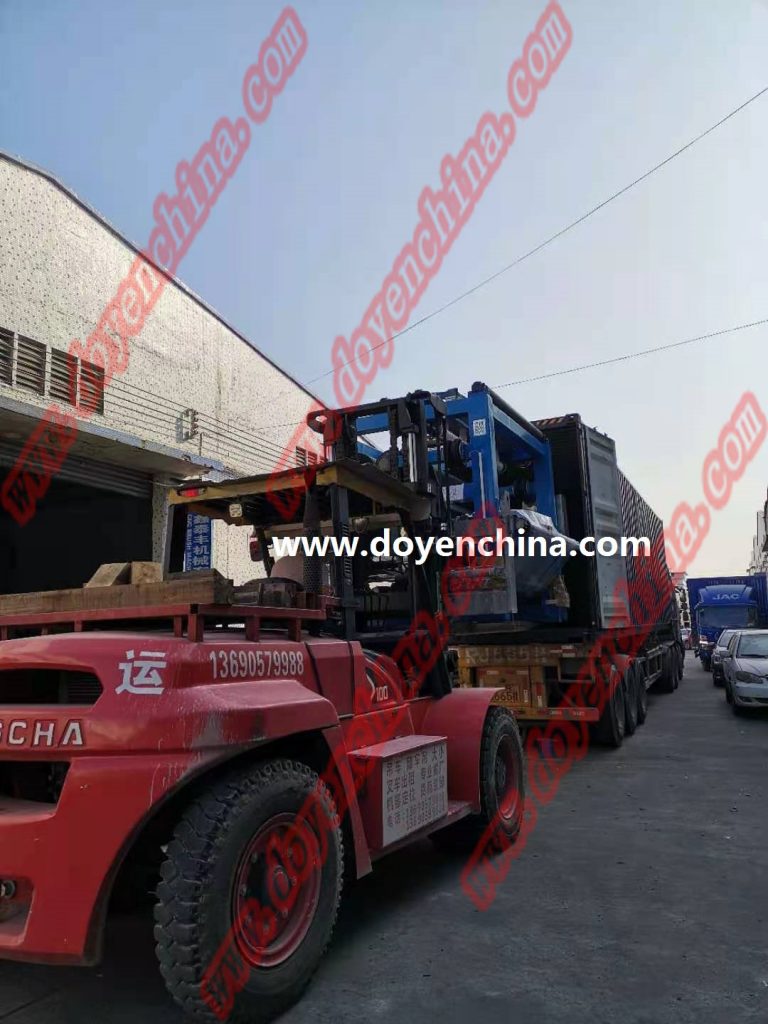

Tel:
+86-757-8633-0278
Email:doyen@doyenchina.com
Fax:+86-757-86287390
Address:Room 201, Building No. 24, Yicui Rose Garden, No. 2, Jihua 7 Road, Chancheng District, Foshan City, Guangdong Province, China 528000.
Eight deserts and four sandy lands are distributed in northwest China, north China, and western northeast China, forming a windy sand belt of thousands of miles from the Tarim Basin in the west to the west of the Songnen Plain in the east. In the last century, China’s desertification and desertification land once expanded, and even “wind and sand approaching Beijing.”
Fortunately, people on this land never give up. They have persisted for many years, controlling sand by law, science and technology, and engineering to make miracles happen——
China has realized a historic change from “sand advancement, people retreat” to “green advancement and sand retreat”. The area of desertification and desertification is “double reduction”; the degree of desertification and desertification is “double reduction”; the vegetation status and carbon sequestration capacity in the sandy area are “both improved”; the regional wind erosion and sandy weather are “double down”.
On the remote sensing image map, people are delighted to see that the moving green in the yellow sand of northern China is connecting one spot after another from the past!
China’s desertification and desertification land area “double reduction” for three consecutive monitoring periods
On the southern edge of the Maowusu Sandy Land, more than 30 kilometers northeast of Dingbian County, Yulin City, Shaanxi Province, there is a place called “Langwosha”.
Shi Guangyin, a farmer in Dingbian County, grew up in the sand nests in this area and was endangered by wind and sand. In the 1960s and 1970s, he began to try afforestation and sand control. In 1984, after the state’s policy to encourage individuals to contract desertification control was introduced, Shi Guangyin dared to be the first to lead his wife and children to move his family to the desert area, and signed a contract with the township government for 3,000 mu of desertification control.
“Sand control is my only business. As long as I don’t die for one day, I will plant a tree for one day and carry out sand control!” Shi Guangyin said. After decades of hard work, Shi Guangyin and his companions built a green ecological barrier on the southern edge of the Mu Us Sandy Land. Today’s “Langwosha” is full of greenery, and Shi Guangyin, who is rare in the past, has also become a well-known “sand control hero”.
The Mu Us Sandy Land is one of the four largest sandy land in China, half of which are located in Yulin. Through the efforts of generations of sand control people, the forest coverage rate in Yulin has increased from 0.9% to 34.8%, and the control rate of desertified land has reached 93.2%.
More than Mao Us! On the territory of China, such gratifying changes are taking place in many parts of the desert.

Look and see-the plants continue to expand, and the green background becomes stronger and stronger.
Inner Mongolia Alxa Left Banner Zongbieli Town Mang came to Gacha, and Suosuo forest stretched across the wild. Looking around, the southern edge of the Ulan Buh Desert is at the end. The Haloxylon forest is like a green barrier blocking the desert, guarding the Yellow River and Helan Mountain.
”Before, this place was full of sand. After planting Haloxylon, the sand settled down and the dunes became lower and lower.” said Liu Hongyi, director of the Alxa Left Banner Forestry Workstation.
”One-fourth of the world’s new green areas come from China!” According to an international study based on satellite data, about one-fourth of the world’s new green areas from 2000 to 2017 came from China, which ranks first in the world. A considerable part of this comes from the greening of the land in the desert area.
Look at it-one by one salons bowed their heads to their ears, and the annoying dust became less and less.
Shangquan Village, Datan Town, Minqin County, Gansu Province, which is only about 1 km away from the desert. Villager Yang Yuming is still deeply impressed by the sandstorm 10 years ago: the sand blew over and hit people’s faces without opening their eyes, the ground film was blown on the trees, and the seeds were blown away. .
“At that time, after the wind and sand, the yard can often sweep out the sand of a cart. Now there is a lot of sand, and after a strong wind, no dustpan can be swept out.” Yang Yuming said. The dust weather in northern China has been significantly reduced in recent years.
Monitoring data from the State Forestry and Grassland Administration show that since 2004, China’s desertification and desertification land area has maintained a downward trend for three consecutive monitoring periods: the desertification land area has expanded from an average annual expansion of 10,400 square kilometers at the end of the last century to the current annual average. Reduced by 2,424 square kilometers; the area of desertified land has expanded from an average annual expansion of 3,436 square kilometers at the end of the last century to an average annual reduction of 1,980 square kilometers. The vegetation status and carbon sequestration capacity in the sandy areas have improved, and the regional wind erosion conditions and windy sand weather have also declined.
China has initially curbed the expansion of desertification!
Spurred by major ecological projects, sand control and poverty control mutually promote each other
Behind this historical change from “sand advancement and retreat” to “green advancement and sand retreat” is the unremitting efforts of the Chinese to contain the “sand demons”.
For decades, China has successively implemented key ecological projects such as returning farmland to forests and grasslands, the construction of the Three-North Shelterbelt system, the control of the source of sandstorms in Beijing and Tianjin, and the comprehensive control of rocky desertification. It has carried out projects such as the construction of sandy land forbidden protection zones and national desert parks. . Sign the “United Nations Convention to Combat Desertification” and promulgate and implement the “Desertification Prevention and Control Law”, building a green barrier at the legal level. At the same time, a large number of leading enterprises and sand control models actively participated, and the general public actively took action, making the green extension and sand dunes stop.
——Major project, laying a solid foundation for sand prevention and control.
In the Three North Project Area, the area of desertified land has been reduced by 1,183 square kilometers annually. In the Beijing-Tianjin sandstorm source project area, Inner Mongolia, Shaanxi, Hebei, and Beijing have built 6 ecological protection forest belts and forest belts…
“Since 1978, my country has successively implemented a series of major ecological projects, with a cumulative investment of more than 1 trillion yuan, which has greatly improved the national ecological situation.” The person in charge of the State Forestry and Grassland Administration said that these projects have a long planning period and coverage. The scope and the intensity of investment are very rare in countries all over the world.
——Continue struggle and create green miracles one after another
Hebei Saihanba, the builders of the forest farm worked hard and dedicated themselves on the desert sandy land where the “yellow sand covers the sky, the birds and the trees” have created a miracle on earth that the wasteland has turned into a sea of forests. In Lingwu, Ningxia, Wang Youde, former director of the Baijitan National Nature Reserve Administration, led the staff to build 600,000 mu of wind-proof and sand-fixing forests and controlled nearly one million mu of quicksand. In Jingbian, Shaanxi, “National Model Worker” Niu Yuqin relies on the hands of herself and his family to plant grass and trees, so that the local 110,000 mu of barren sand is covered with green clothing…
“In my country’s long-term sand prevention and control practice, a large number of sand control heroes such as Shi Guangyin, Wang Youde,’Babusha and Six Old Men’ have emerged, as well as Saihanba in Hebei, Youyu in Shanxi, Kubuqi in Inner Mongolia, and Xinjiang. “Ke Keya and other desert control models.” said Sun Guoji, Director of the Desertification Control Department of the State Forestry and Grassland Administration. “Perseverance, perseverance, unstoppable sand damage and unstoppable sand control” have inspired the broad masses of officials to dare Take responsibility, overcome difficulties, and fight stubbornly against the sand disaster.
——Enterprises participate in exploring advanced technologies and models to control sand disasters.
The Kubuqi Desert, a few decades ago, there was still a sea of sand that could not be seen at a glance. Now the sand dunes are covered with green and the sand has turned into good land. The four-wheel drive of “party committee and government policy-oriented, enterprise industrialization investment, market participation of farmers and herdsmen, and continuous technological innovation”, more than 80 enterprises have devoted themselves to Kubuqi sand control and sand industry development, pursuing “green prosperity and prosperity” “.
Sand retreats and greens progress, ecology improves, “Golden Mountain and Silver Mountain” will follow. “Returning farmland to forests makes the barren hills green, and the mountain peaches all over the mountains become precious eggs. The mountain peach cores are made into handicrafts, and tourists are very welcome.” said Gao Jianzhong, a returning farmer in Nancheng Village, Huangduobao Town, Yuanzhou District, Guyuan City, Ningxia.
Sand control and poverty control mutually promote each other, forming a virtuous circle. “All regions have scientifically developed and utilized resources such as light, heat and wind in the sandy area, and developed characteristic planting, breeding and processing, desert tourism and other green industries that enrich the people according to local conditions. This has increased employment opportunities for farmers and herdsmen, expanded income channels, and accelerated the pace of poverty alleviation.” Sun Guoji said.
According to statistics, the economic forests in northern sandy areas that have entered the fruit-bearing period produce 48 million tons of dried and fresh fruits each year, accounting for about 1/3 of the country’s total output, with an annual output value of 120 billion yuan, and fruit income in key areas has accounted for half of farmers’ net income. the above. In the past three years, the poverty population in the 12 northern desert provinces has decreased by more than 10 million.
Sand control is not about “destroying the desert”, but focusing on scientific control
One person inserted the slender water pipe into the sand, and the water pressure suddenly rushed out a hole, and the other person inserted the sand willow and filled it with sand. It only takes about 10 seconds to plant a Salix.
”This method is called’Minimally Invasive Airflow Tree Planting’, which reduces soil disturbance and increases the survival rate to over 80%.” Yili Group’s sand control expert introduced.
The Chinese realize in practice that deserts are part of the earth’s ecosystem. Sand control does not mean to “eliminate deserts”, but to control man-made desertified land on the basis of respecting science and observing the laws of nature.
Relying on scientific and technological innovation and respecting the laws of nature, China’s desertification control has moved from extensive to refined. The “prescriptions” for sand control have become more and more diverse and the effects have become more and more obvious.
——Manual management with one hand. Carry out pilot projects for precision sand control, measure water, determine green by water, and balance forest water.
In 2018, the State Forestry and Grassland Administration selected 30 representative counties (banners and districts) in the forest area of the Three North Project to carry out pilot projects for precision sand control.
Accurate sand control, the core is to measure water, determine green by water, and balance forest water.
In the past two years, nearly 2 million mu of precision sand control pilot projects have been carried out, and the regional ecological environment has been effectively protected and improved. “In the construction of the six phases of the Three-North Project, the scope of precise sand control will be further expanded, from’overflow irrigation’ to’precise drip irrigation’,” said Sun Guoji.
——Repair naturally with one hand. Fully implement the red line of desert ecological protection and protect the natural desert vegetation.
In 2013, China launched a pilot project of subsidy protection for desertified land. Up to now, there are 104 closed and protected areas for desertified land, and 1.74 million hectares of closed and protected areas. The closure and protection eliminated the impact of human activities such as grazing and reclamation, allowing the vegetation in the sandy area to gradually recover naturally.
The reporter saw during interviews in many places in the sandy area that the natural restoration effect of the closed protected area was remarkable.
Provide the international community with “Chinese experience” in combating desertification
The “Chinese answer sheet” of desertification prevention and control has attracted worldwide attention.
United Nations Secretary-General Guterres commented that: China has taken the lead in achieving “zero growth” in land degradation worldwide, and “double reduction” in the area of desertified land and desertified land, making a huge contribution to the global realization of the United Nations 2030 goal of zero growth in land degradation. The secretariat of the United Nations Convention to Combat Desertification praised: “China has become a global model in its governance of deserts.”

The combination of government leadership and public participation, natural restoration and artificial governance, legal constraints and policy incentives, key breakthroughs and general advancement, combination of science and hard work, and ecological governance and improvement of people’s livelihood—— China has embarked on a path of desertification prevention and control with Chinese characteristics, formed a replicable, extendable, and sustainable desertification control model, and formulated a “Chinese prescription” for the world to cure “earth cancer”
“A series of major projects implemented by the state have played a leading role, and at the same time, they have supported and led a large number of enterprises and the public to participate and form a strong synergy to promote desertification prevention and control.” said Yang Wenbin, chief expert on desert prevention and control of the Chinese Academy of Forestry. China’s desertification prevention and control experience has extensive reference significance to the world.
Currently, more than 2 billion people in 167 countries and regions are threatened by desertification. In recent years, exchanges and cooperation in desertification prevention and control in countries and regions along the “Belt and Road” have been continuously strengthened, and China’s advanced technologies and governance models for desertification prevention and control have been promoted. Chinese experience is going abroad and sharing with the world!
The Chinese people’s efforts to combat desertification will never stop.
The country as a whole is still lacking forests and greenery, and the ecology is fragile. Desertified land amounts to 2.61 million square kilometers, accounting for a quarter of the country’s land area; desertified land amounts to 1.72 million square kilometers, accounting for nearly one-fifth of the country’s land area.
“Places with good site conditions have basically completed governance, and most of the remaining places have poor construction conditions, relatively harsh environments, arid climates and less rain, and the difficulty and cost of governance are getting higher and higher. Sand prevention and control have entered the’hard bones’. Stage.” Sun Guoji said.
Sun Guoji said that during the “14th Five-Year Plan” period, sand prevention and control will follow the principles of prevention first, scientific management, and rational utilization, and follow the laws of nature and economy. Focus on development in border areas with important ecological locations, major sand and dust source areas, and river basins. On the basis of comprehensive protection of desert vegetation, measures such as engineering sand fixation, artificial afforestation, grass cultivation, and sand sealing for afforestation and grass cultivation are planned to complete the governance task 8.5 million hectares.
“Ecological governance, the road is long and long, and the line is coming.” Following the strategy of harmonious coexistence between man and nature, and towards the goal of building a beautiful China, China will continue to promote desertification prevention and control, and return nature to harmony and beauty for the people. Well-being!
Doyen specializes in providing belt press equipment for the Southeast Asian market. Welcome to visit our workshop and formulate a more scientific plan based on the actual situation of your company. Welcome to visit joyce@doyenchina.com or visit https://www.doyenchina.com.
Feb-08-2021
admin

 +86-757-8633-0278
+86-757-8633-0278 doyen@doyenchina.com
doyen@doyenchina.com Sitemap
Sitemap